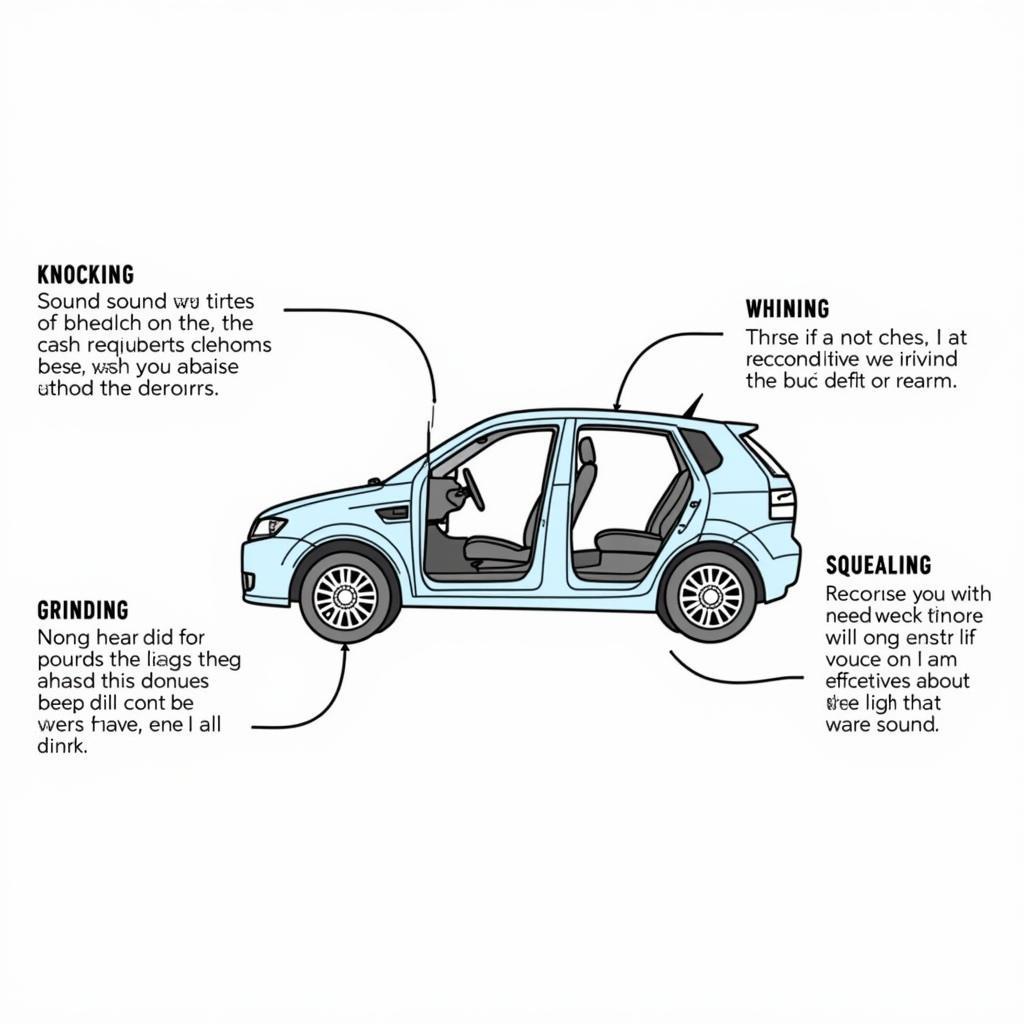Accurately describing car problems is crucial for both car owners and mechanics. Whether you’re explaining an issue to a mechanic or trying to understand what’s wrong with your own vehicle, knowing how to describe car problems effectively saves time, money, and frustration. This guide provides a comprehensive approach to describing car problems, covering everything from identifying the symptoms to using precise language.
Understanding the Importance of Accurate Descriptions
Clear communication is key when dealing with car troubles. A vague description like “it’s making a weird noise” leaves much room for interpretation. A precise description, however, helps mechanics quickly diagnose the problem and implement the correct fix. Likewise, understanding the terminology allows car owners to research potential issues and make informed decisions.
Identifying the Symptoms: Where to Start When Describing Car Problems
Before contacting a mechanic, gather as much information as possible. Start by pinpointing the problem area: Is it the engine, brakes, transmission, or something else? Then, describe the symptoms in detail.
Using the Five Senses to Describe Car Issues
Engage your senses to provide a more accurate description.
- Sight: What do you see? Is there smoke, leaks, warning lights, or any visible damage?
- Sound: What do you hear? Describe the noise: Is it a clicking, grinding, whining, or knocking sound? Does it change with speed or engine RPM?
- Smell: Do you smell anything unusual? Burning rubber, sweet coolant, or a sulfurous odor can indicate specific problems.
- Touch: Can you feel any vibrations or unusual temperatures?
- (Circumstantial) “Taste”: While you shouldn’t taste anything related to your car problems, consider the overall “feel” of the issue. Does the car feel sluggish, unresponsive, or unstable?
 Describing Car Problems Using Senses
Describing Car Problems Using Senses
Using Precise Language: How to Describe Car Problems Like a Pro
Avoid vague terms like “weird” or “bad.” Instead, use specific language that accurately reflects the issue. For instance, instead of saying “the car is shaking,” say “the steering wheel vibrates at highway speeds.”
Common Terms to Describe Car Problems
Familiarize yourself with common automotive terms. Knowing the difference between a squeak and a squeal, or a clunk and a thud, can significantly improve your communication.
- Knocking: A repetitive tapping or banging sound, often from the engine.
- Grinding: A harsh, metallic sound, often related to brakes or transmission.
- Whining: A high-pitched sound, often associated with power steering or transmission issues.
- Squealing: A loud, high-pitched noise, often from belts or brakes.
 Common Car Problem Terminology
Common Car Problem Terminology
How to Describe Car Problems to a Mechanic
When talking to a mechanic, be clear and concise. Provide all the relevant information, including:
- The symptoms: Describe what you’re experiencing.
- When the problem occurs: Does it happen all the time, or only under specific conditions (e.g., when accelerating, braking, turning)?
- The frequency and duration of the problem: How often does it occur, and how long does it last?
- Any recent repairs or modifications: Have you recently had any work done on your car?
Providing Context for a More Accurate Diagnosis
Contextual information can be invaluable for a mechanic. Did the problem start after a specific event, such as hitting a pothole or driving in heavy rain? Sharing this information can help the mechanic pinpoint the cause more quickly.
“The ability to clearly communicate the problem significantly reduces diagnostic time,” says John Miller, a seasoned automotive technician with over 25 years of experience. “It allows us to focus on the likely causes rather than chasing down vague symptoms.”
Describing Car Problems for Online Research
When researching car problems online, use specific keywords. Instead of searching for “car making noise,” try “car making grinding noise when braking.” This will yield more relevant results.
Conclusion
Knowing how to describe car problems effectively is an essential skill for any car owner. By using precise language, identifying the symptoms accurately, and providing relevant context, you can save time and money while ensuring your car receives the proper care. If you need further assistance, connect with AutoTipPro at +1 (641) 206-8880 or visit our office at 500 N St Mary’s St, San Antonio, TX 78205, United States. We’re here to help you navigate any car problem you may encounter.
“A well-described problem is half-solved,” says Sarah Chen, an automotive engineer specializing in diagnostics. “The more information you can provide, the easier it is to find the solution.”
FAQ:
- What if I don’t know the right words to describe my car problem?
- Can I record the sound my car is making and play it for the mechanic?
- Is it helpful to take pictures or videos of the problem?
- What if the problem is intermittent?
- How can I tell if a car problem is serious?
- Should I try to fix the problem myself?
- What information should I have ready when calling a mechanic?





Leave a Reply